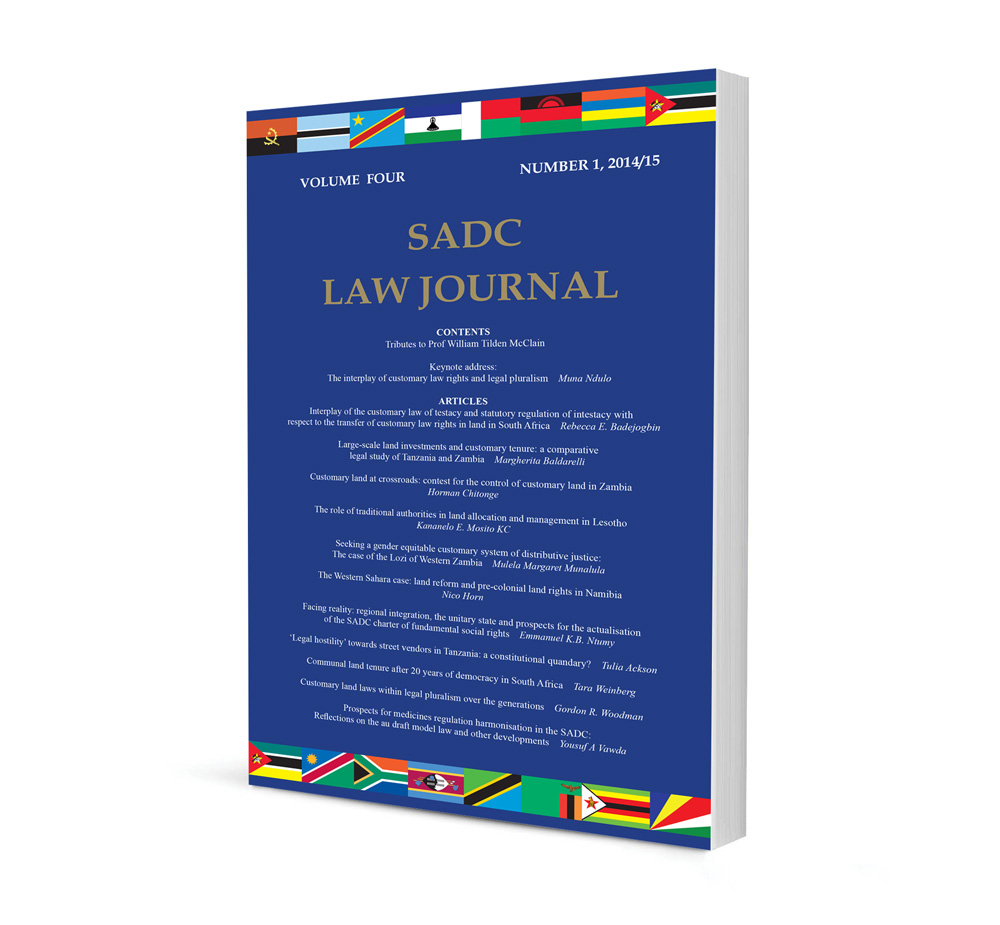
Communal land tenure after 20 years of democracy in South Africa
Authors Tara Weinberg
ISSN: 2026-8556
Affiliations: Researcher, Centre for Law and Society, University of Cape Town
Source: SADC Law Journal, The, 2014/15, p. 164 – 188
Abstract
Twenty years have passed since the Bantustans were reintegrated into South Africa. Yet for the 17 million people still living in these former homelands, the struggle for full recognition of their land rights persists. The post-1994 government refers to the former homelands as ‘communal areas’, where ‘communal tenure’ is at play. This paper focuses on ‘communal tenure’ reform developments (or lack thereof) with reference to law, policy and practice in rural areas in South Africa. While laws to promote tenure security for farm dwellers and labour tenants have been enacted, there is no legislation beyond the Interim Protection of Informal Land Rights Act (IPILRA) to secure the land rights of people living in the former Bantustans. Despite the post-1994 constitutional requirement that the state make secure the land tenure of people in all of South Africa, it has so far failed to do so. This legislative ‘vacuum’ has contributed to the precarious nature of people’s land rights in the former homelands. This paper argues that communal land tenure is not in a healthy state and discusses recent laws and policies that are symptoms of this ill health, including the ‘willing buyer-willing seller’ policy, the Communal Land Rights Act, the Traditional Leadership and Governance Framework Act and the government’s recent new communal land tenure policy. Taking cognisance of the interface between customary and ‘informal land rights’, and South Africa’s legal systems of property recognition, the paper explores the historical roots of the insecurity of land tenure with which millions of South Africans struggle. Finally, the paper diagnoses some of the root causes of the failures of communal land tenure reform and posits some alternative solutions.